Karin Hueber
Traceur/Traceuse
4 Solos for Kunsthaus Baselland
24.1. —
23.3.2014
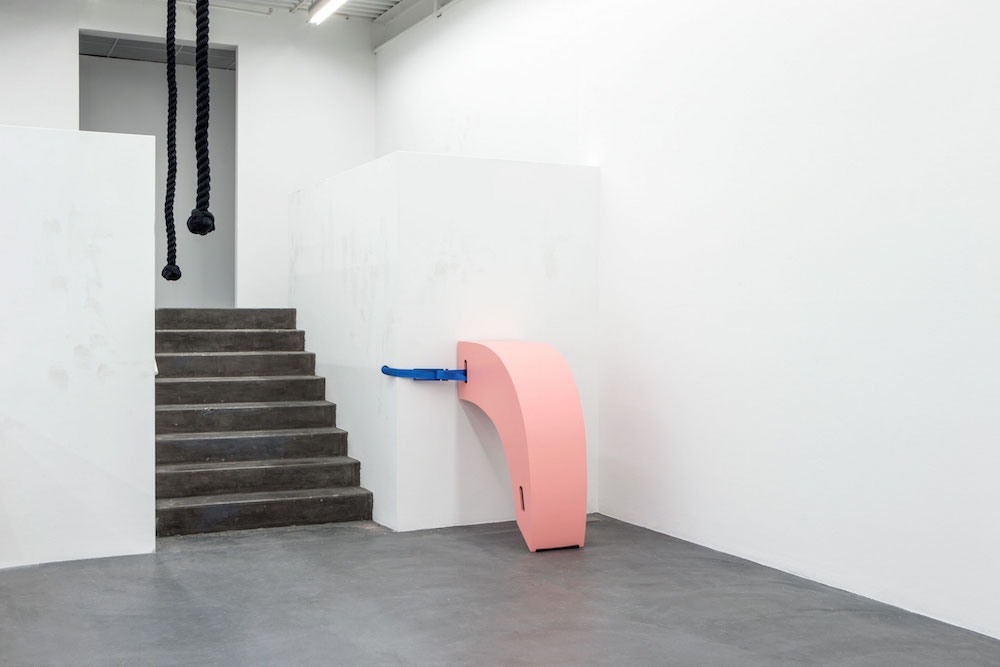
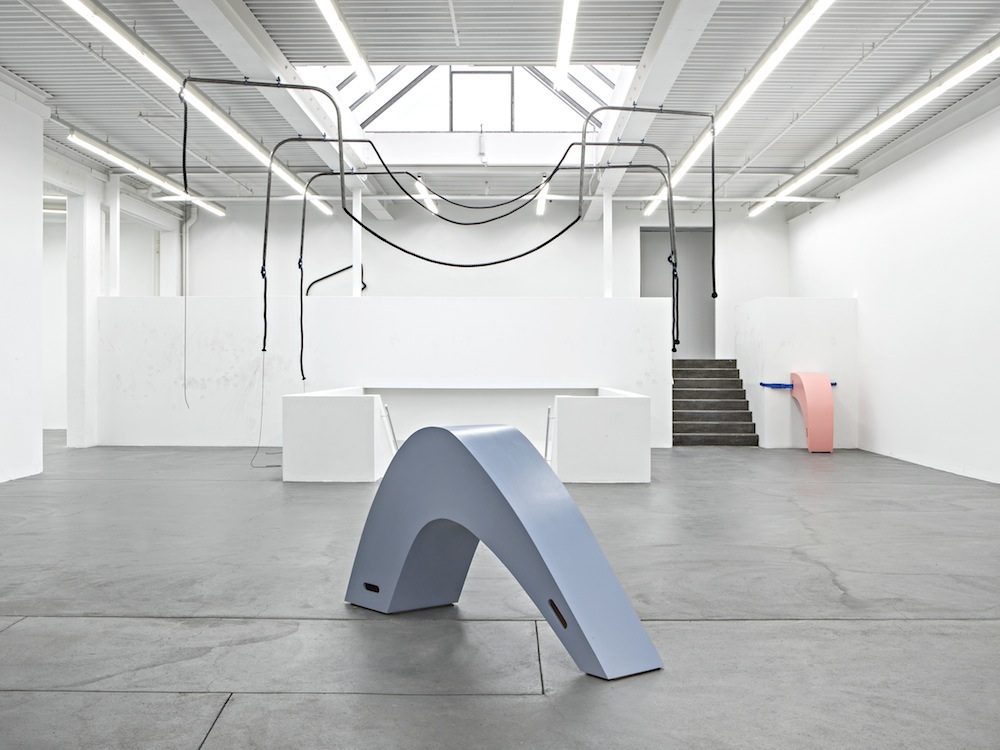
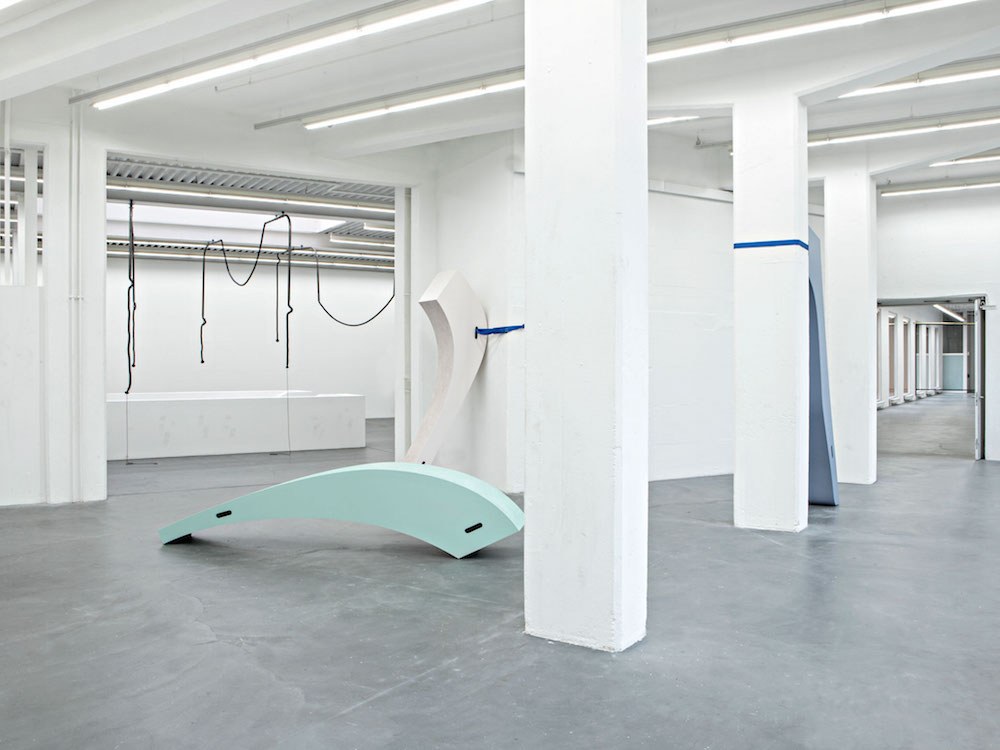
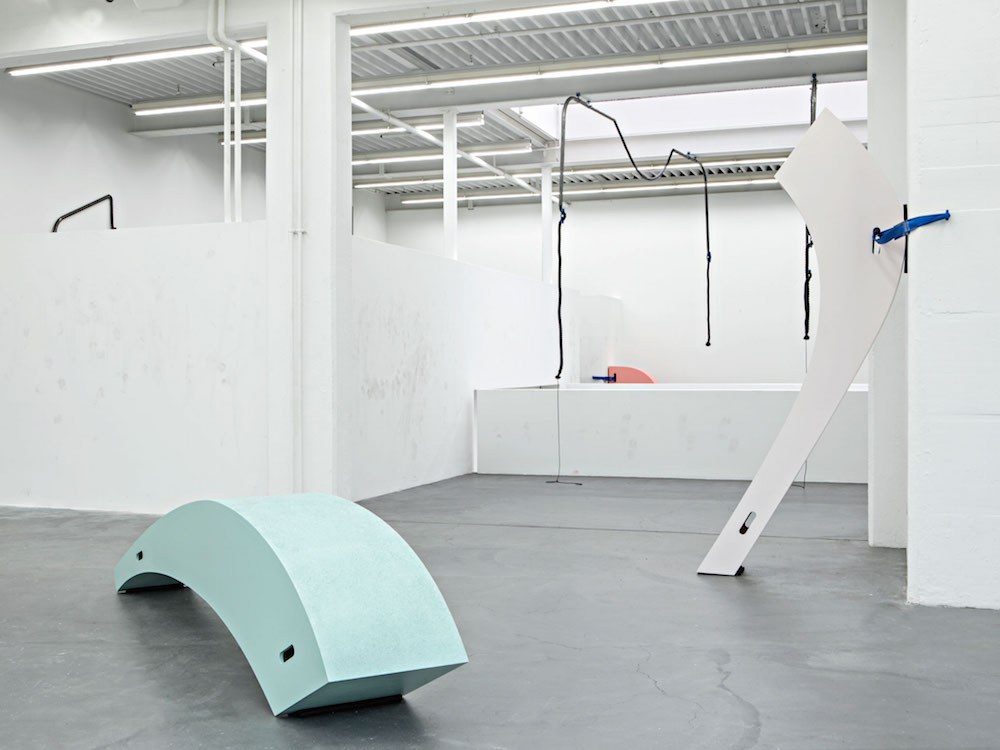
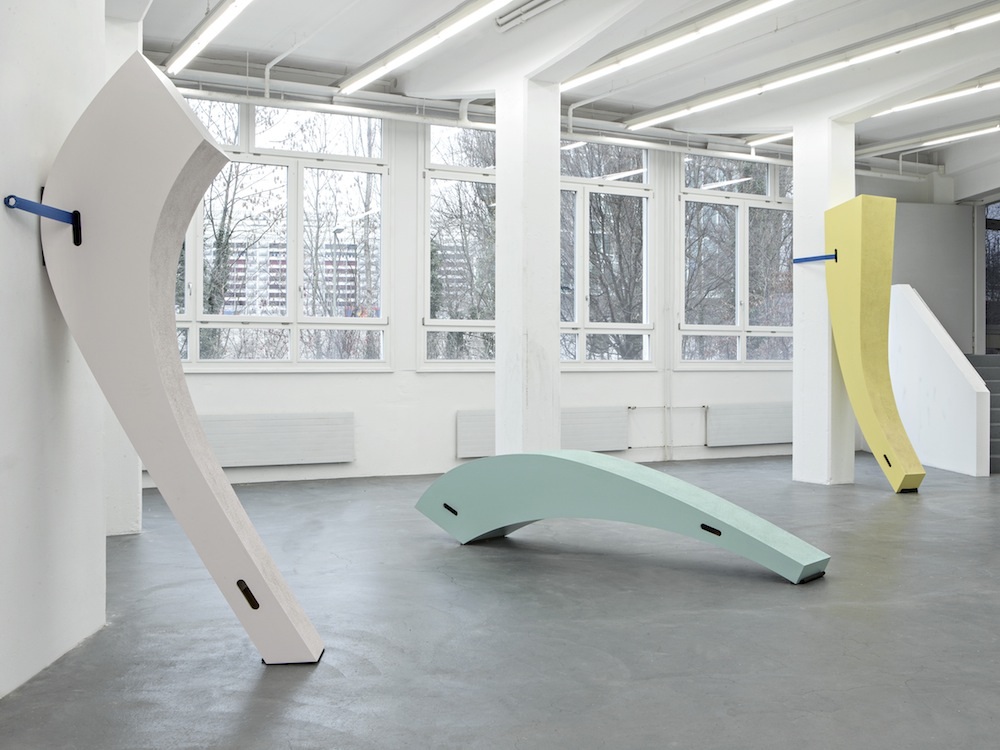
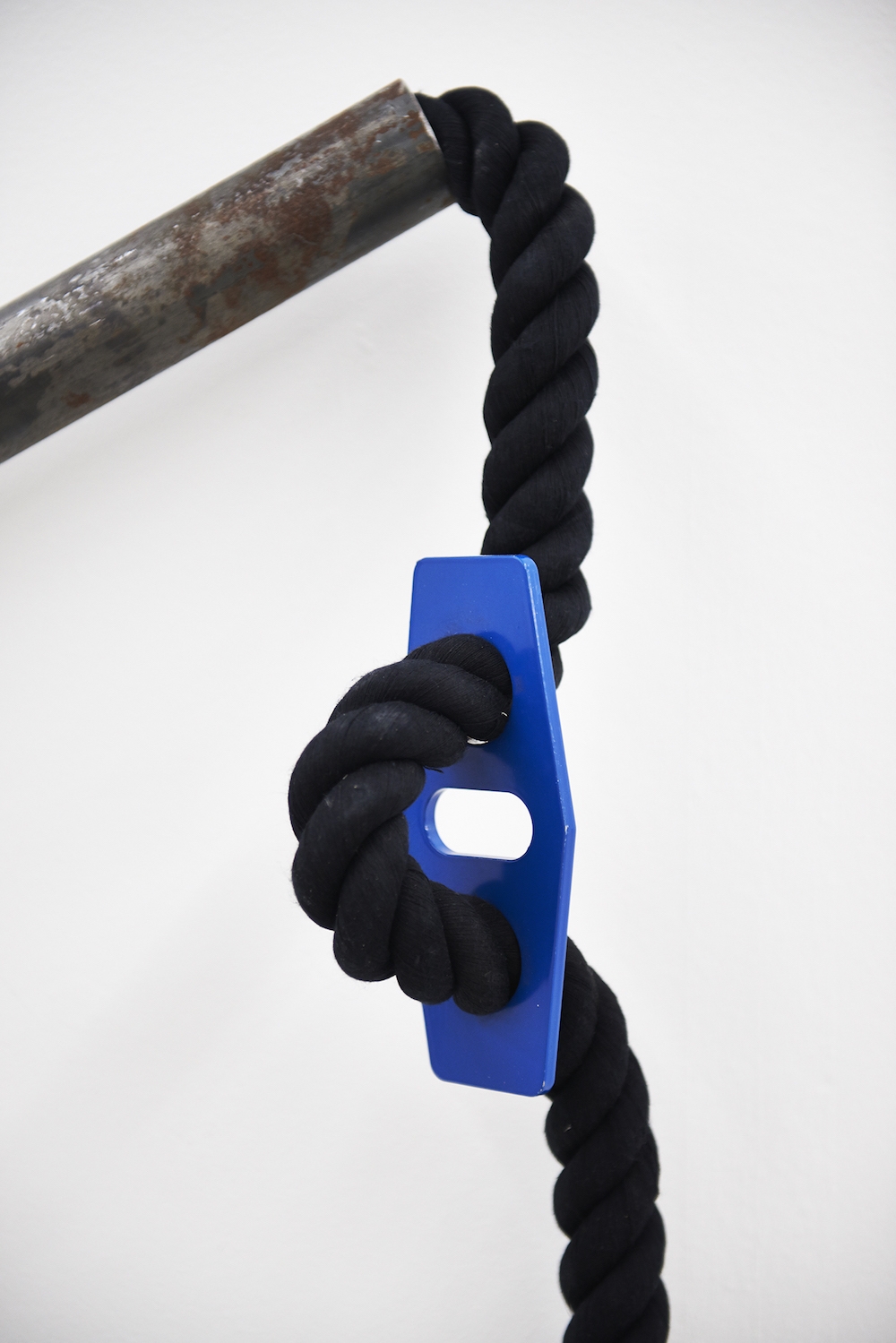
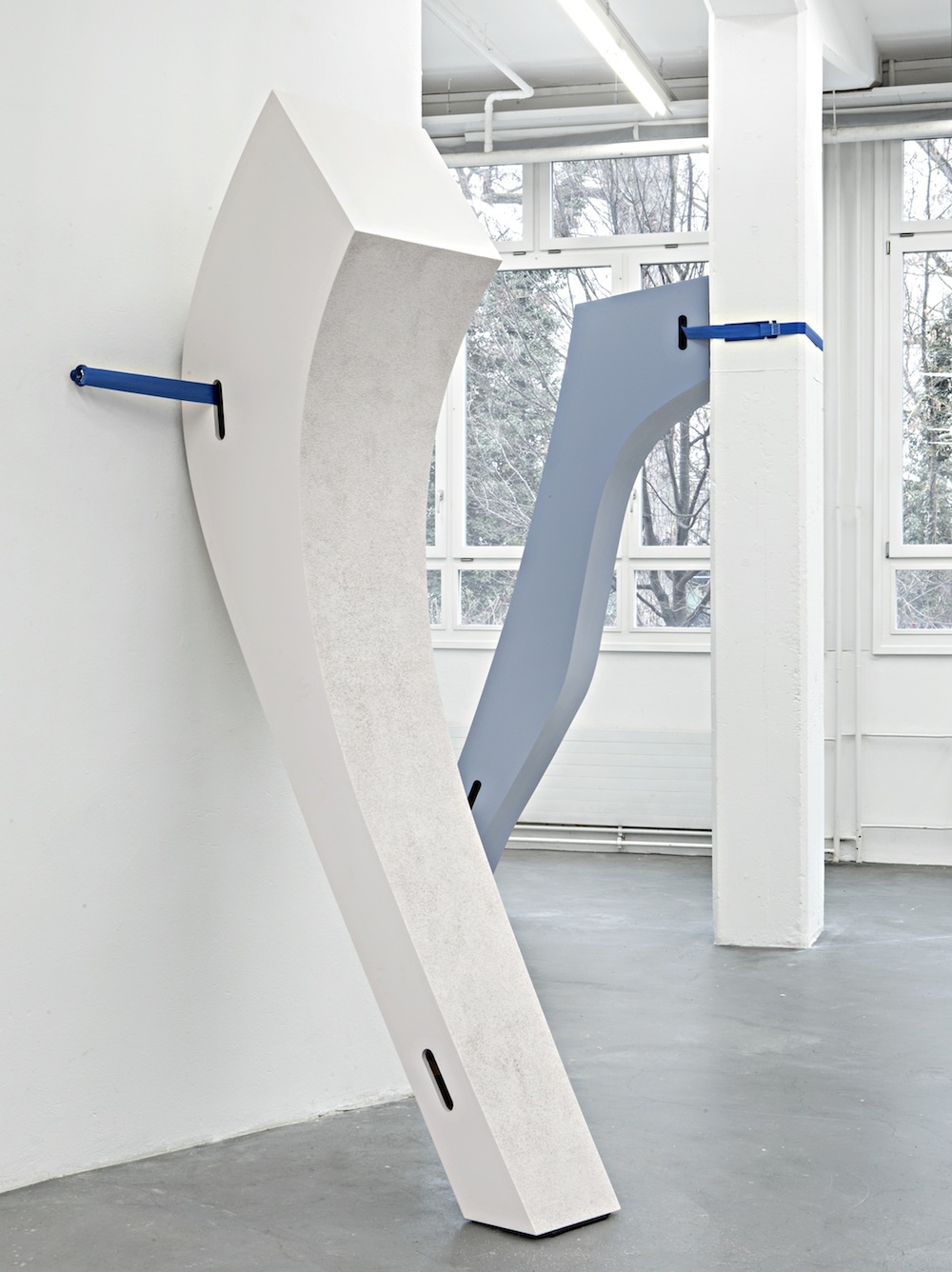
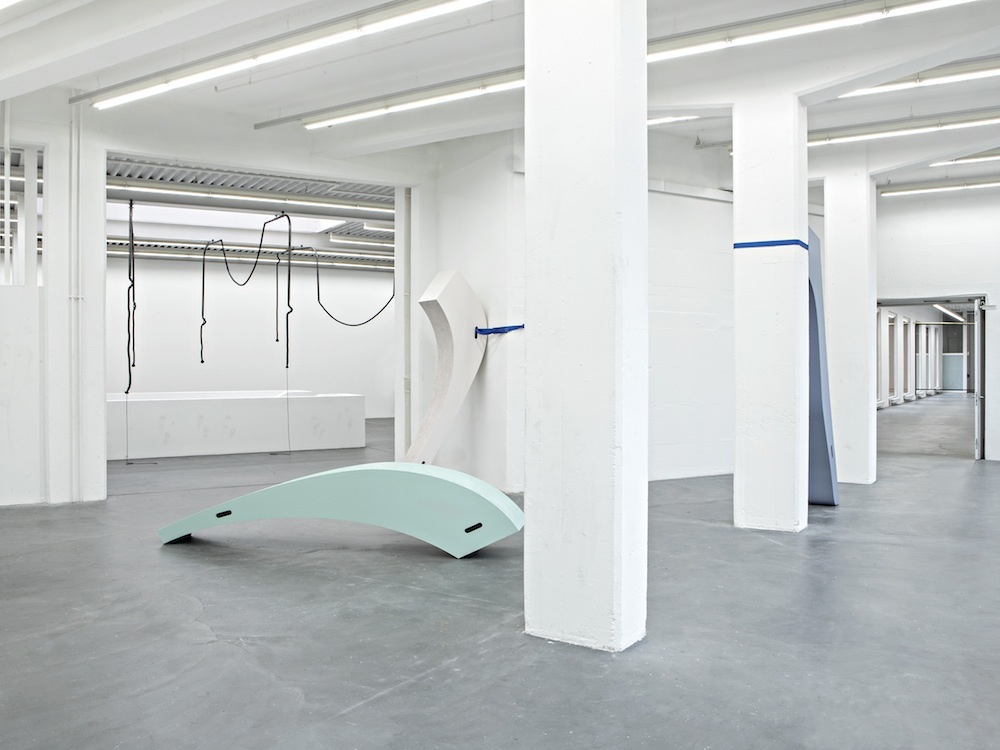
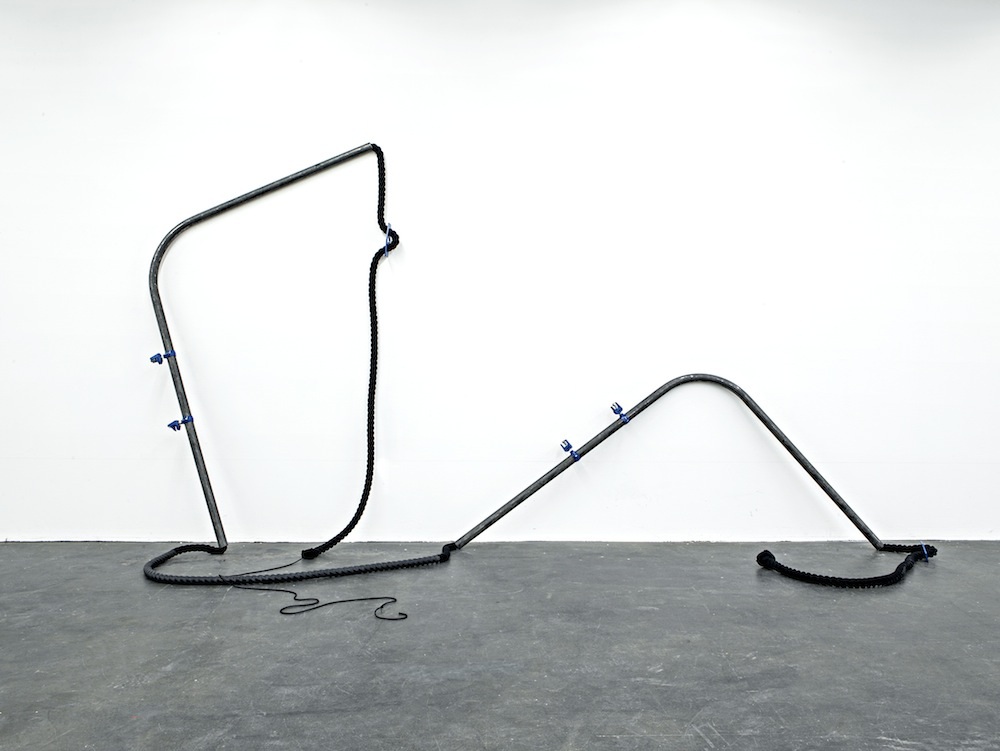
Selected press coverage
Karin Hueber develops her works and large-scale installations out of consistently nuanced analysis of an (exhibition) space as she encounters it. For her first major institutional solo exhibition at the Kunsthaus Baselland the artist will deal directly with the architecture of the ground floor of the Kunsthaus and develop sculptures that respond to the topic of the fast movement.
In her work for the Kunsthaus Karin Hueber is making her focus the basic question of how artists deal with a given (exhibition) space, how they sound out boundaries, how they cope with what can be physical challenges and how they – with every exhibition and every artistic intervention – make the room, with all its evident and unremarked qualities, their own. Only after an initial analysis of the space that the artist undertakes artistically, on the one hand, and on the other with athletes, does she conceive of her installations, sculptures and wall traces.
The large wooden sculptures Obstacles in the exhibition, some of which Karin Hueber has painted in soft shades or coated in quartz sand, appear to be stand-ins for human movements and gestures in the spaces of the Kunsthaus: they lean gently on walls, nestle against or lean on posts or lift themselves up confidently from the ground. The artist fixes the large format, ramp-like objects to the given space with blue tension belts. Even here, at this point in the space, the sculptures stand or lie, and arrange themselves in a circuit of the space. Their forms, which emerge from the artist’s freehand drawings, remind one of past or even possible leaps in the space.
The wooden sculptures are supplemented with hanging sculptures in metal, thick cords with shrink sleeving, blue mounting attachments and blue cable clamps, all of which Huber has applied to the iron girders below the skylight of the Kunsthaus. With these, and the blue tension belts, she formally leads into the individual works. With their stepped positioning and their appearance the hanging sculptures are strongly reminiscent of equipment for jumps and movement in the space; on the other hand they accord with spatial drawing and lines that slowly narrow and run out, as a fine trace, at one end. It is of key importance that both the wooden sculptures and the hanging metal sculptures accord with the artist’s interest in different materials, and that they elude definitive legibility or classification. Through the focus on technical details of the minimal sculptures, that almost appear harsh — like the tension belts, how they rest on sheets of foam, their soft colouring, their treatment with sand, the oval openings on both sides, suitable for a grip — they have that very harshness drawn from them.
With the sculptures and sculptural interventions thus placed, Hueber formulates and emphasises the particular architecture of the ground floor of the Kunsthaus — whether floor, wall, ceiling or passage. Here no room is enclosed, there are hardly any right-angled corners, yet nonetheless the spaces are not reminiscent of a classical White Cube. The ground floor is a passageway, a space of movement. During almost every exhibition visitors walk through the spaces of the ground floor several times, in order — like a kind of distributor — to access the neighbouring spaces from there. The artist has adopted an extreme fashion of this form of movement in space, which the visitor completes, for her so-called ‘parcours’ run, and she actively includes the idea in her work for the Kunsthaus.
So the starting point for her work here is a clear engagement with the parcours that has developed into a form of sport. The question of how one can take over the given, found space is central for this sport, which challenges, possibilities and limits to one’s own movement are manifest in the space. The choice of the perfect angle for jumps, its bounce as well as various descriptions of jumps were decisive for the conception of the parcours considered in advance. A parcour traceur or traceuse — as is the title of the work — borrows something, helps themselves to their urban surroundings, moves creatively and relates to previous movements. Here he or she is comparable to the artist and an artist’s actions. The artist too helps himself or herself to the space in order to create something of their own, something new. For the traceur the right action at the right moment is the focus, movement in an interstitial space, in places that escape public attention.
With her sculptures and installations Karin Hueber has created a kind of stage for a performance by professional parcours runners, a performance that has in fact taken place, but which is not visible to the public because it took place during the development of the work in the Kunsthaus. The action is not the central part of the work. Instead in the foreground are the development of the course with the traceur team previously mentioned, the influence of Huebers ability to jump on the placement and appearance of the works and — and this above all — the traces that the actual run, through and over the works, left behind. Thus Karin Hueber also speaks about “activated sculptures” that have both actual and possible traceur movements in their memory. In contrast to these are the ‘not activated’ that can in the future be installed in other places and incorporated in the process of activation.
Text by Ines Goldbach
The exhibition was generously supported by Ernst und Olga Gubler-Hablützel Stiftung, Stiftung Roldenfund and nationale suisse.
During Karin Huebers exhibition the three solo exhibitions by Boris Rebetez, David Keating and Felix Schramm were also on display.